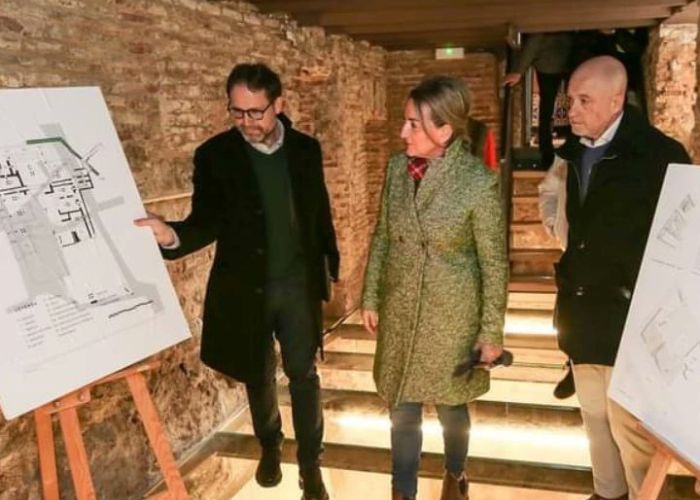TOLEDO – The most important thermal remains of Roman Hispania, “very well preserved and very monumental”, lie in and partly still under the city of Toledo. Furthermore, the municipality plans to exhibit the latest finds to the public from Easter.
These are the cold water baths – also known as frigidarium – that were found in May last year during excavations in a residential building on Calle Navarro Ledesma. Since then, work has been done on the foundations and integration of the archaeological remains with the architecture of the building so that they can be visited.
The ancient Roman baths of Toledo played an important role in the city’s history and new excavations will reveal even more about these important structures. Milagros Tolón, the mayor of the city, recently praised the work of the Toledo Consortium on the project, according to ElDiario.es. This aims to expose the service installations of the Roman thermal complex that still lie beneath several buildings in the area.
Latest developments cause for celebration
Speaking of the upcoming excavations, Tolón said: “The previous research has shown us how important the Roman baths were to Toledo. We are therefore excited to learn even more about this fascinating period in our city’s history.” Meanwhile, the Consortium’s manager added that the team’s reconnaissance work has been going on since 2004. Much has been revealed since then, but that does not alter the fact that the latest developments are now causing celebration.
The archaeological work has expanded the total area of the thermal complex found so far to 3,000 square metres. Treasures have been found in it. Examples are the dancing satyr sculpted in Greek marble, as well as other parts of this public spa. This spa they consider as the ‘most important found in Spain’.
Not even in Merida”
“Not even in Mérida,” emphasised the archaeologist Carmelo Fernandez, responsible for the project. The archaeologist refers to the importance of the thermal complex concerning the excavations that can be seen in the city of Extremadura, often referred to as the “Rome of Spain“. “We can talk about the most important thermal remains of Roman Hispania, very well preserved and very monumental,” she stressed.
In the coming weeks, visitors to Toledo will have the chance to see the discoveries for themselves. Soon the municipality will announce where and when free guided tours will be given.
Roman Toledo
Toledo blossomed during the Roman era. The Romans arrived in the 2nd century BC. for the first time in the area. Soon they established a military camp there. Over time, Toledo became an important trading centre, thanks to its strategic location on the Tagus River. This facilitated the transport of goods throughout the region.
The extensive network of public baths now under construction is one of the most notable features of Roman Toledo. These baths were used for hygiene and relaxation, but also for social purposes.
Toledo also had a thriving artistic and cultural scene during Roman times. The city was home to several important writers and thinkers, including the poet Lucan and the philosopher Seneca. Furthermore, the city was known for its fine arts and crafts, such as pottery and metalworking.
Related post: The smallest window in the world can be seen in Toledo
In general, Toledo’s Roman past is a crucial part of Toledo’s history. The ongoing excavations and research are helping to shed new light on this fascinating period in the city’s past.


